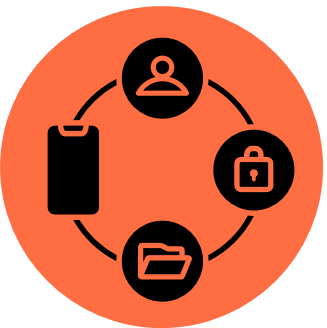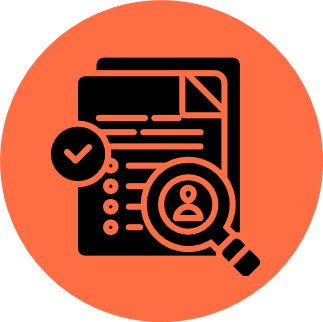Digital identities have always been the keys to the modern world, enabling access to systems, data, and services for the right people. Today, cyber threats are continuously multiplying and steadily getting more sophisticated, leading to digital identities becoming prime targets for attackers. With the introduction of the NIS 2 Directive, the European Union aims to ensure businesses within the EU market become more resilient. And identity and access management (IAM) will play a key role in it. As the directive’s release is around the corner, this article takes a closer look at how IAM solutions can help companies achieve compliance.
Reiterating the importance of NIS 2
Introduced in 2016, the original Network and Information Security (NIS) Directive focused on strengthening cybersecurity in Europe with a focus on companies and sectors that are dependent on information and communication technologies. NIS 2 expands on this, targeting 18 different sectors with stricter requirements aimed at reducing IT systems vulnerabilities and data breaches. The directive is set to be released in October 2024. EU members will then have a few months to adopt the directive and publish their recommendations for the companies to be compliant. Refer to our guide to get an overview of the main NIS 2 requirements.
IAM for NIS 2: Closer to compliance

Access management
The most important NIS 2 requirement that could translate into an IAM solution is the integration of multi-factor authentication (MFA) solutions to access systems and applications securely.
Access manager solutions enable companies to benefit from strong MFA and/or Single Sign-On (SSO), which not only improve security but also enhance the user experience by reducing the number of login credentials required.
Moreover, with MFA and SSO, organizations can build the right foundations for a zero trust security model, which should not be ignored. In zero trust, no user or device is trusted by default, even if they are inside the network perimeter. As every request access should be continuously verified in this model, organizations would more easily comply with NIS2 and other IT security standards and directives.

Identity governance
Another requirement for NIS 2 compliance is to have an access control system in place. Identity governance solutions can provide and facilitate the creation of security policies with role-based access control (RBAC). Access rights are granted based on predefined roles within the organization to be sure that only the right people access the right resources with the required rights for the right business reasons.
Furthermore, identity governance solutions can offer access certification campaigns. These campaigns enable periodic reviews of user access rights to ensure they align with current business needs and security policies. A wide range of parameters may be chosen, such as users, organizations and applications selection, user rights, and risk levels for the rights to be certified.
Campaign participants focus on the most critical rights, saving time. Moreover, levels of responsibility are defined and allow organizations to assign the right level to the right participants.
Finally, campaign tracking dashboards can be provided to manage the account review process. These campaigns also help you reach the zero trust security model.

Identity and access reports
NIS 2 requires the company to have a cyber incident management team and to report incidents within 24h, 3 days and a month after the incident. Today, most IAM providers offer dashboards and/or reports which could help match this requirement.
IAM solutions typically generate audit trails for every activity by users and administrators. Every attempt at authentication, access to a resource, account creation, and password change, as well as every modification of the configuration of the product is recorded. This information is then compiled into dashboards and/or reports.
Regarding NIS 2, it would be very useful to track down suspicious behaviors such as unusual authentication dates and times, and separation of duties (SoD) violations. Moreover, certification campaign reports help track the progress and results of access, users and password reviews to understand who accessed the system, when and how. All of this is possible through dedicated IAM reports, as well as a zero trust architecture.
These reports can be part of an IAM solution (access or identity management for example) or as a stand-alone solution (which generally offers more features like report customization). These can then be linked to an IAM solution.

High availability
Finally, you need your IAM system to be highly available, especially when it comes to ensuring access to your critical systems. A high availability software ensures business continuity in the event of incidents such as hardware or software failures, human errors and other disruptions. This is another key requirement of NIS 2. Key features available in such a software are load balancing, synchronous real-time file replication, automatic application failover, and even automatic failback after a server failure. This kind of software can be coupled with any IAM solution to strengthen resilience and safety in case of an incident.
Other key considerations
- Cyber hygiene is a mandatory requirement to be compliant with NIS 2. Among other requirements, it includes password changes and software/hardware updates. Both are included in many IAM solutions, such as access or identity management solutions.
- Use of artificial intelligence and machine learning (AI/ML) to enhance cybersecurity is another recommendation from NIS 2. We have already seen many IAM players who have begun to include it into their solutions.
- On-premises and SaaS IAM solutions can help you be compliant with NIS 2. Nowadays, both of these have similar features and customization capabilities, including all of what has been presented previously.
So how important is IAM for NIS2? Although all of the above make a strong case to showcase the role of IAM, it is important to note that this alone will not be sufficient to be NIS 2 compliant. Nonetheless, having a strong IAM infrastructure fortifies companies to be more resilient to threats and helps them comply with NIS 2’s key requirements.
Connect with me to start a conversation on how to choose the right IAM solution for your organizational needs.
Learn more about how IAM solutions can take you to the next level with NIS 2 compliance and more. Visit our website: www.evidian.com





